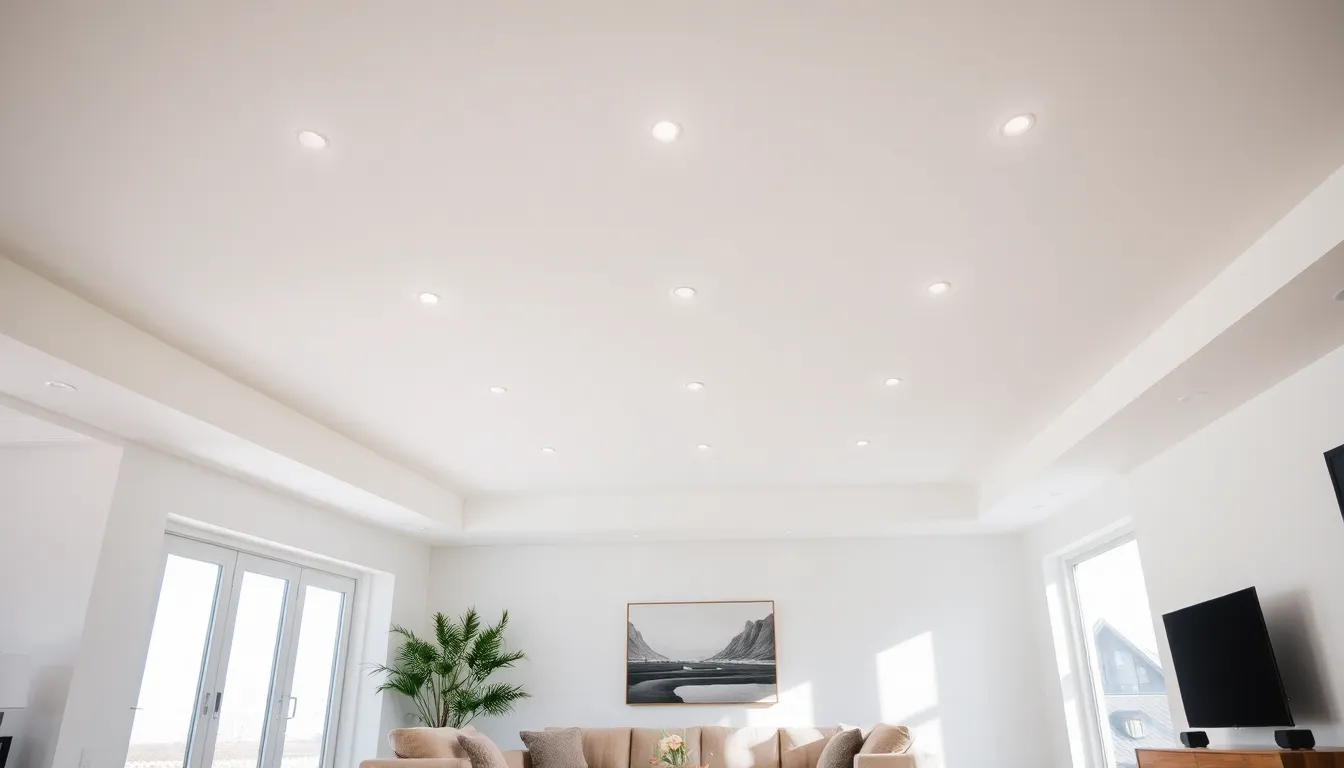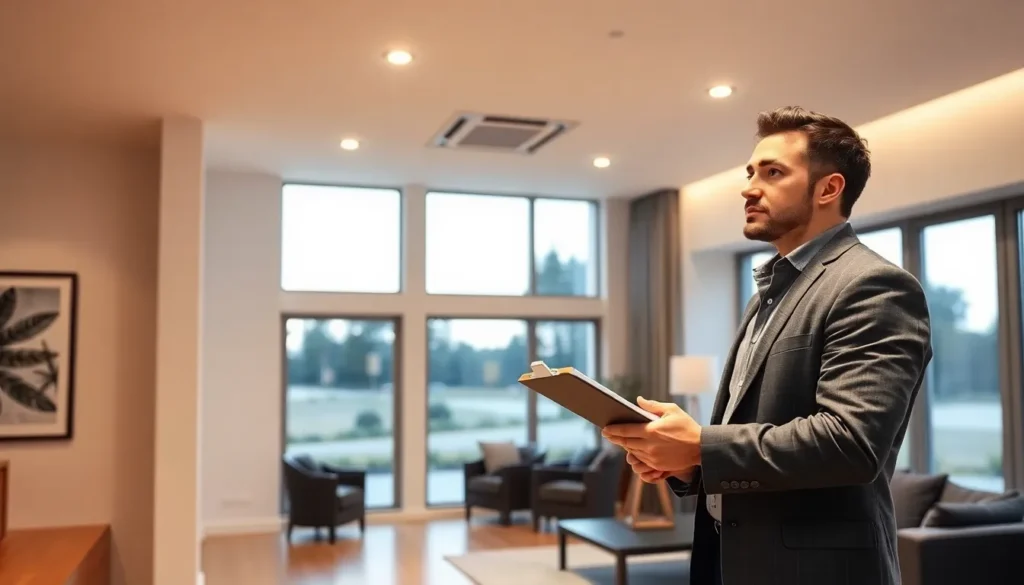Imagine stepping into a room where the lighting perfectly complements every corner, casting a warm glow that makes everything feel just right. No, this isn’t a scene from a home improvement show: it’s simply the magic of recessed lighting housing. If you’ve ever wondered how to illuminate your space in style, or if you just want to stop fumbling with outdated fixtures, this guide is your ticket to enlightenment. So, buckle up and get ready: it’s time to shine a light on recessed lighting housing like never before.
Table of Contents
ToggleUnderstanding Recessed Lighting Housing

Recessed lighting housing, often referred to as can lights or pot lights, is designed to be installed into the ceiling, offering a sleek, unobtrusive lighting solution. But what exactly is housing? To put it simply, it’s the outer shell that encases the lighting mechanism. This housing holds the light bulb and electrical components, ensuring safety and efficiency while delivering that modern aesthetic sought in many homes today.
Installing recessed lighting transforms spaces into everything from cozy nooks to spacious entertaining areas. Unlike traditional light fixtures, they don’t hang down, which can make low ceilings feel taller and rooms less cluttered.
Understanding the types offered and their applications can empower anyone, from DIY enthusiasts to professional contractors, to make informed decisions in their quest for the perfect lighting solution.
Types of Recessed Lighting Housing
When it comes to recessed lighting housing, variety reigns supreme. Here are the main types you’ll encounter:
New Construction Housing
Designed for homes with a planned installation, new construction housing lets you install lighting into ceilings before drywall goes up. This type typically includes adjustable brackets that secure easily into trusses or wood framing.
Remodel Housing
Designed for existing structures, remodel housing allows for easy installation through finished ceilings. This is perfect when embarking on a renovation or when just wanting to freshen up a space without tearing apart ceilings.
IC Rated Housing
IC, or Insulation Contact, rated housing is crucial in areas where insulation is a factor. This type ensures safety as it can come into contact with insulation without causing a fire hazard by overheating.
Non-IC Rated Housing
In environments where there is no insulation, non-IC rated housing is an option. Typically, these models require a distance from insulation to maintain safe temperatures.
Choosing the right type is essential, and understanding the differences can make or break a lighting project.
Installation Process for Recessed Lighting Housing
Installing recessed lighting housing may seem daunting, but with a little patience and the right approach, anyone can do it. Here’s a straightforward breakdown of the installation process:
- Planning: Start by determining where you want your lights. Consider the size of the room and the effect you want to achieve. Mark the locations with a pencil.
- Turn Off Power: Safety first. Ensure that the power is turned off to avoid any nasty surprises.
- Cutting Holes: Use a drywall saw to cut holes in the ceiling where your lights will go, following the manufacturer’s guidelines for hole size.
- Electrical Setup: Run the wiring from your power source to each housing unit. Ensure connections are secure and agree with local codes.
- Install the Housing: For new construction, attach the housing to the ceiling joists. For remodel housing, use the clips to secure it to the drywall.
- Insert the Bulbs: Once the housing is secured, insert your chosen bulbs according to the manufacturer’s instructions.
- Restore Power and Test: After everything is connected and secured, turn the power back on and enjoy your newly lit space.
Benefits of Recessed Lighting Housing
Recessed lighting housing offers numerous benefits worth exploring. Here are a few compelling reasons to consider them for your home:
- Aesthetic Appeal: They create a clean, modern look that fits seamlessly into various design styles. No more hanging lamps obstructing that stunning ceiling.
- Versatile: Perfect for any room, be it the kitchen, living room, or even a bathroom. Recessed lighting can highlight artwork, provide general illumination, or create an inviting atmosphere.
- Space-saving: Ideal for small areas or rooms with low ceilings since they won’t intrude into the space like traditional fixtures.
- Energy Efficient: With options for LED bulbs, recessed lighting can significantly reduce energy use, saving on electricity bills while being environmentally friendly.
Choosing the Right Recessed Lighting Housing
Choosing the right recessed lighting housing is crucial for achieving the desired effect. Here are some factors to consider:
- Room Size: Larger rooms may require multiple fixtures for adequate illumination, while smaller rooms can thrive on fewer lights.
- Ceiling Height: Higher ceilings may benefit from deeper housings or adjustable fixtures to create the perfect light angle.
- Bulb Type: Different bulbs, such as LED, incandescent, or halogen, vary significantly in brightness, energy efficiency, and look. Select bulbs that align with your lighting intent.
- Style and Trim Options: The style of the trim (the visible part that sits flush against the ceiling) can create different looks. Options range from modern to traditional: selecting one that complements your decor is essential.
- IC vs. Non-IC: Ensure the housing is suitable for the specific location about insulation. This decision can impact safety and energy efficiency.
Common Mistakes to Avoid
Navigating the world of recessed lighting housing? Here are some common missteps to steer clear of:
- Overcrowding the Space: Cramming too many lights can create an overwhelming effect rather than a warm ambiance. Less is often more.
- Ignoring Placement: Improper placement can lead to shadowy spots or an unbalanced glow. Take time to plan the layout properly.
- Choosing the Wrong Bulbs: Selecting bulbs without considering brightness and color temperature can ruin the entire lighting effect. Always check compatibility with the housing.
- Neglecting to Consult Local Codes: Many areas have codes governing electrical installations. Ignoring these can lead to fines or hazards. Always be informed.





